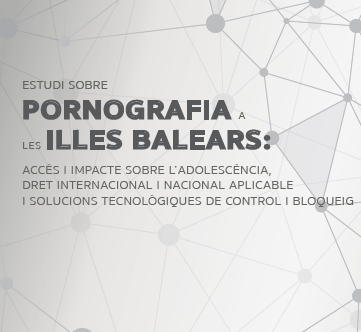The ‘Study on pornography in the Balearic Islands: access and impact on adolescence, relevant international and national law and technological control and blocking solutions‘, reveals that 90 percent of adolescents in the Balearic Islands consume or have consumed pornographic content. 34.3 percent of male adolescents do it daily, compared to 2.5 percent of girls.
As Prof. Valentina Milano, principal investigator of this study and secretary of LIDIB, indicates, this situation is very worrying since this content is very harmful for children and adolescents. The main consequences of this visualization are:
- Poor mental health and a detrimental impact on the brain development of children.
- Early and unhealthy sexual relations.
- Sexism and the normalization of discriminatory and degrading behaviors against women.
- Sexual violence.
- The increased risk of sexual dysfunctions and a reduced ability to build healthy and satisfying sexual relationships afterwards.
- The risk of developing addictive behavior to pornographic content, video games, etc., with a negative impact on school performance and on family and social life.
3,629 young people between the ages of 13 and 18, 2,592 families and 75 educational centers from the four islands participated in the surveys carried out within the framework of this study. In addition, discussion groups have been held with about 60 adolescents as well as expert consultations.
This study is pioneering since, for the first time, not only the social and educational problems have been investigated, but also the legal and technological aspects. In particular, professors Valentina Milano, of Public International Law, and María Ballester, of Constitutional Law, both members of LIDIB, have carried out a detailed study of the international, European, national and regional regulatory framework on this issue. As this part of the study makes clear, distributing pornography to minors and instigating them to produce pornographic images are criminal conduct. However, up to now this legal framework has not been effectively applied in the digital context: platforms with pornographic content have not been sanctioned nor have effective measures been taken to prevent minors from accessing this content.
Finally, the study includes an analysis of the technological tool to control the access of minors to pornographic content that should be implemented to prevent this content from continuing to be freely accessible to a boy or girl of any age on video sharing platforms and social networks.

